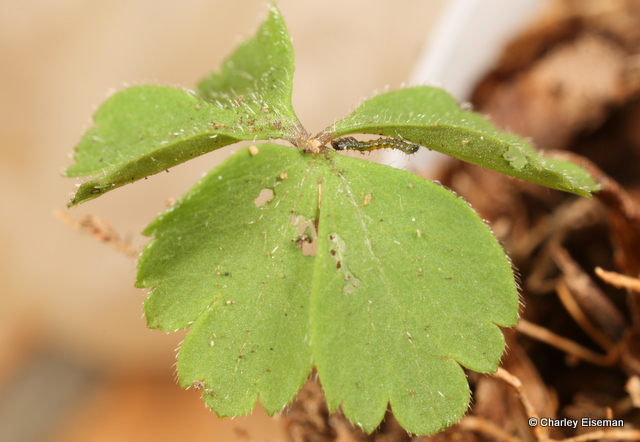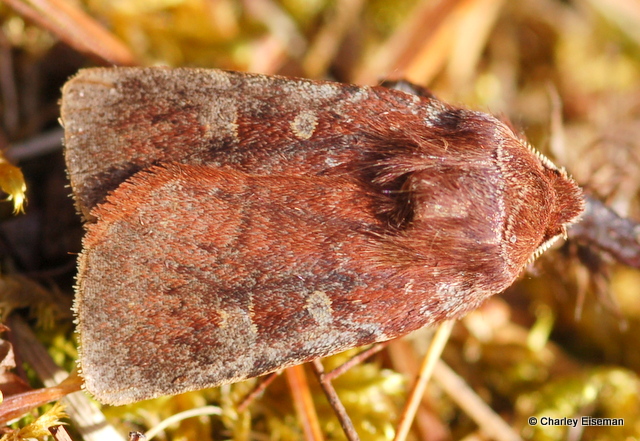In April 2012, I noticed some sawfly leaf mines on wood anemone (Anemone quinquefolia) that I knew had not been documented before, so I collected some to try and rear them. One plant had so many mines that I decided to try potting it rather than plucking off all the leaves and putting them in a vial. I kept the potted plant on the kitchen counter where I could easily keep an eye one it, and after a few days I noticed some little holes had been munched in one of the leaves. A closer look revealed a tiny caterpillar resting on the underside of one of the leaflets.
I decided to try and raise it, and the changes it went through as it grew illustrate why learning to identify caterpillars is so challenging:
April 19 (3 mm).
April 26 (7 mm).
May 3.
May 11 (17 mm).
May 14 (~21 mm).
May 20.
May 27. At this point, I wasn’t quite sure whether it was dying or pupating…
…but on June 1 it shed its skin one last time to reveal a healthy pupa (15 mm). Since I happened to have just met caterpillar aficionado Sam Jaffe at Seabrooke Leckie‘s book signing, on May 11 I showed him the most recent photo and he guessed it was a Reddish Speckled Dart (Cerastis tenebrifera). He forwarded the photo to David Wagner, lead author of Owlet Caterpillars of Eastern North America, who said that would be his guess too. On April 16 of this year, the moth emerged, proving them both right:
Like many owlet moths (Noctuidae), this species is not host-specific; it has previously been reared from dandelion, lettuce, cherry, raspberry, birch, blueberry, grape, and willow. This may be the first record of it from the buttercup family (Ranunculaceae). Wood anemone is not listed as a host plant for any moth species in the HOSTS database.
















Fantastic post, Charley! Seeing the progression captured in your photos is like watching magic.
Wood anemone is often chewed up by the 1st of June in eastern MA, when it disappears anyway (spring ephemeral). I wonder if these do most of the eating?
Could be. I haven’t really noticed much external feeding on wood anemone; just the abovementioned sawfly mines, which are very common, and an agromyzid mine that I have only found in one spot on Nantucket, likewise unknown to science. Evidently not many people have paid much attention to what’s feeding on this plant.
Pingback: Spring Moth | BugTracks
Orthosia gothica found at Anemone nemorosa. 27.4.2020 Finland, Helsinki.